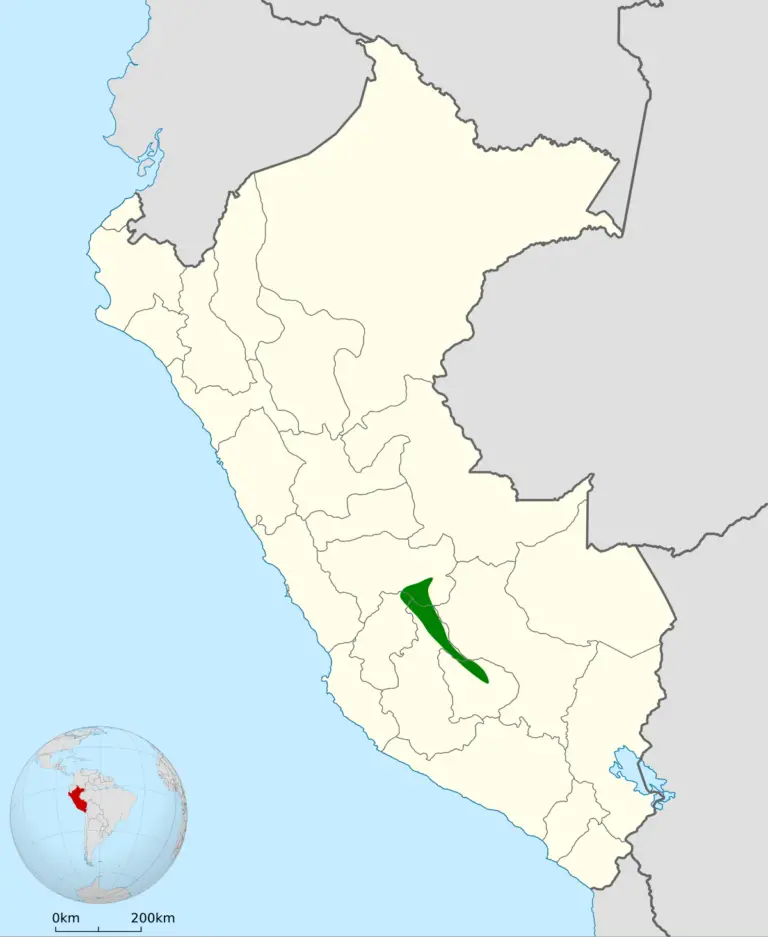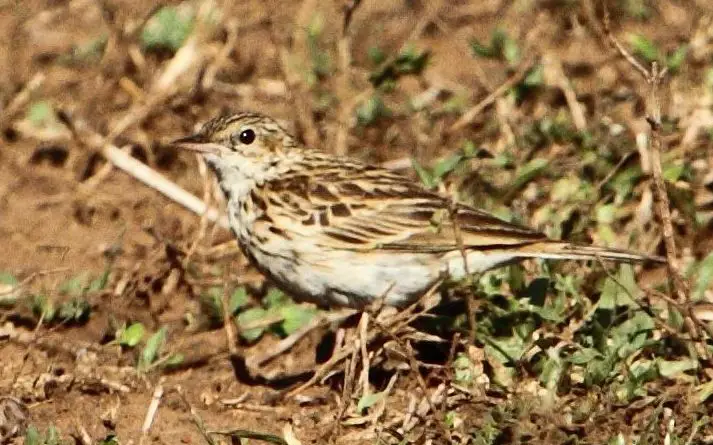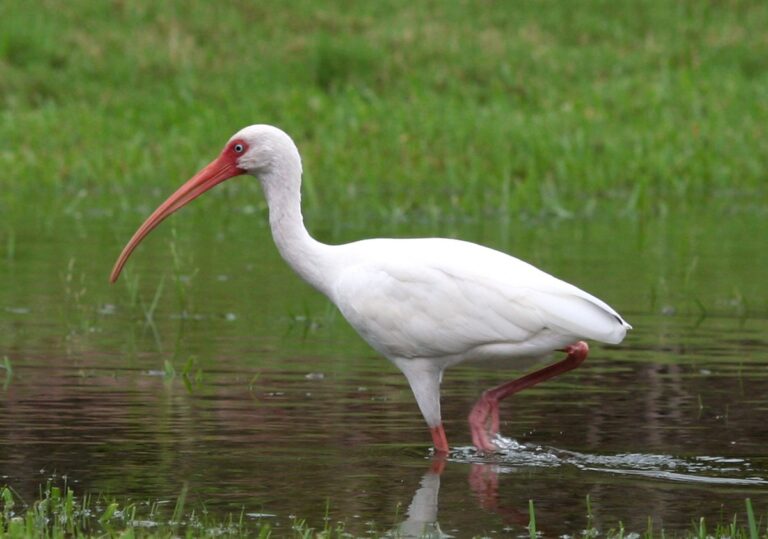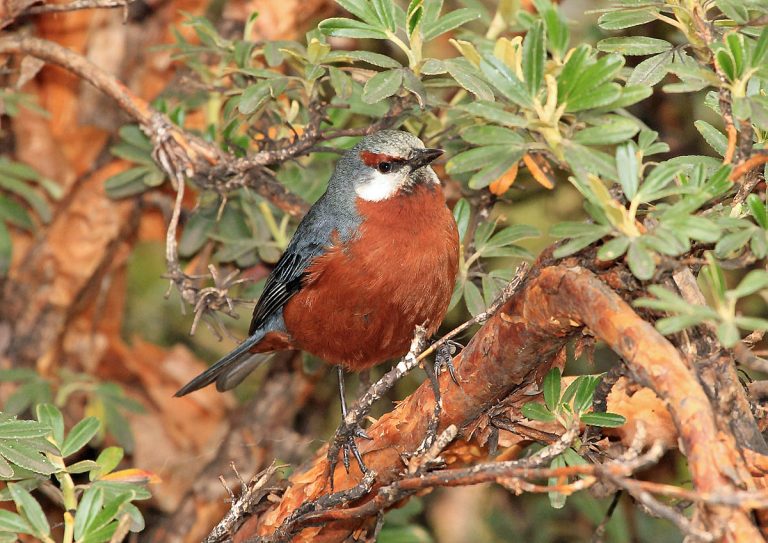Mockingbird
“Mockingbirds are incredible mimics that can learn hundreds of songs!”
The Mockingbird belongs to the following taxonomic classification:
- Kingdom: Animalia
- Phylum: Chordata
- Class: Aves
- Order: Passeriformes
- Family: Mimidae
Mockingbirds are commonly found in various regions of the Americas, including Central America, North America, and South America.
Here are some facts about Mockingbirds:
- Prey: Mockingbirds feed on a variety of prey including insects, spiders, land crabs, snails, earthworms, other invertebrates, lizards, and baby turtles. Insects are their main prey.
- Name of Young: Mockingbird young are called chicks.
- Group Behavior: Mockingbirds typically exhibit solitary or pair behavior.
- Fun Fact: Mockingbirds are renowned for their incredible mimicry abilities, capable of learning and mimicking hundreds of songs from other birds and animals.
- Biggest Threat: Cats pose a significant threat to mockingbirds.
- Most Distinctive Feature: Their most distinctive feature is their ability to sing many songs and mimic various birds and animals. They also have long tails, long pointy bills, long legs, and are usually gray with white and black accents, sometimes appearing blue or brown.
- Incubation Period: The incubation period for Northern Mockingbirds is 12 to 14 days, but little information is available for other species.
- Age of Fledgling: Mockingbird chicks fledge at about 12 days in Northern Mockingbirds, but again, little information is available for other species.
- Habitat: They inhabit mostly open areas, sparse forests, forest edges, parks, urban areas, suburban areas, pastures, grasslands, savannas, shrublands, and desert edges.
- Predators: Predators of mockingbirds include cats, hawks, owls, snakes, crows, jays, squirrels, and raccoons.
- Diet: Mockingbirds are omnivores, feeding on insects, berries, and other fruits.
- Lifestyle: They are diurnal (active during the day) and can be solitary or in pairs.
- Favorite Food: Besides insects, mockingbirds enjoy berries and other fruits.
- Number of Species: There are 14 known species of mockingbirds.
- Location: Mockingbirds are found in North America, South America, Central America, and the Caribbean.
- Average Clutch Size: Mockingbirds typically lay clutches of around 4 eggs.
- Nesting Location: They usually nest in trees.
Physical Characteristics:
- Color: Mockingbirds can appear brown, gray, blue, black, or white.
- Skin Type: They are covered in feathers.
- Lifespan: In the wild, mockingbirds live for approximately 8 years.
- Weight: They weigh between 1.4 to 2.8 ounces.
- Length: Mockingbirds measure between 8 to 11 inches.
- Age of Sexual Maturity: Mockingbirds typically reach sexual maturity at about 1 year of age.
- Venomous: Mockingbirds are not venomous.
- Aggression: They can exhibit high levels of aggression, especially when defending their nests or territories.
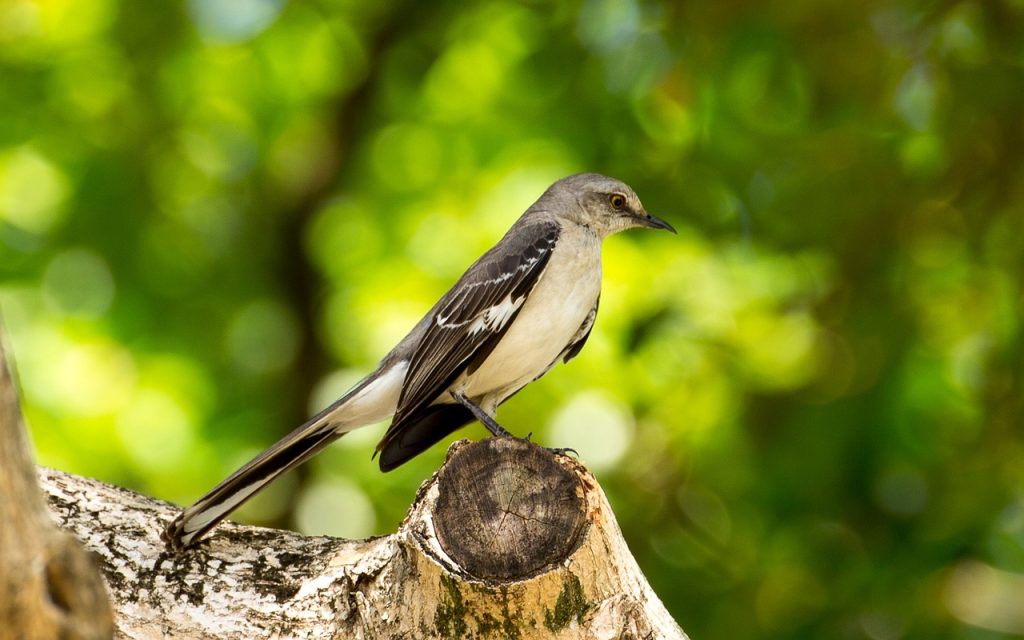
Mockingbirds, encompassing 14 different species, boast a diverse distribution across the Americas. While the Northern Mockingbird is well-known in the United States, southern Canada, Mexico, and parts of the Caribbean, other species extend further south, populating regions from Mexico through Central America, the Caribbean, and into South America. Some species inhabit islands, while others reside on the mainland.
Despite their varied habitats, mockingbird species share similar characteristics in shape and size, typically presenting shades of gray with white accents. Although most species exhibit this coloration, one species showcases a brown back, while two others sport predominantly blue plumage.
Renowned for their vocal talents, mockingbirds are adept singers, mastering the songs of other birds while composing their own melodies. Yet, alongside their musical prowess, mockingbirds are known for their aggressive nature, fiercely defending their territories against intruders. This blend of exceptional singing abilities and territorial vigilance renders mockingbirds remarkable and formidable inhabitants of the Americas.
Incredible Mockingbird Facts
Here are some fascinating facts about mockingbirds:
- Diet: Mockingbirds are omnivores, consuming a varied diet that includes insects, other invertebrates, seeds, fruits, small animals, and carrion.
- Intelligence: These birds are remarkably intelligent. They can remember the faces of people who come too close to their nests and are unlikely to forgive subsequent intrusions.
- Conservation Status: Some species of mockingbirds are endangered or threatened, highlighting the importance of conservation efforts to protect their populations.
- Naming: Many mockingbird species are named for the places where they are found or for their distinctive appearances, reflecting their diverse habitats and characteristics.
- Taxonomic Classification: Until 2007, mockingbird species found in the Galápagos Islands were classified under the Nesomimus genus. However, they were later moved to the Mimus genus, reflecting updates in their taxonomic classification.
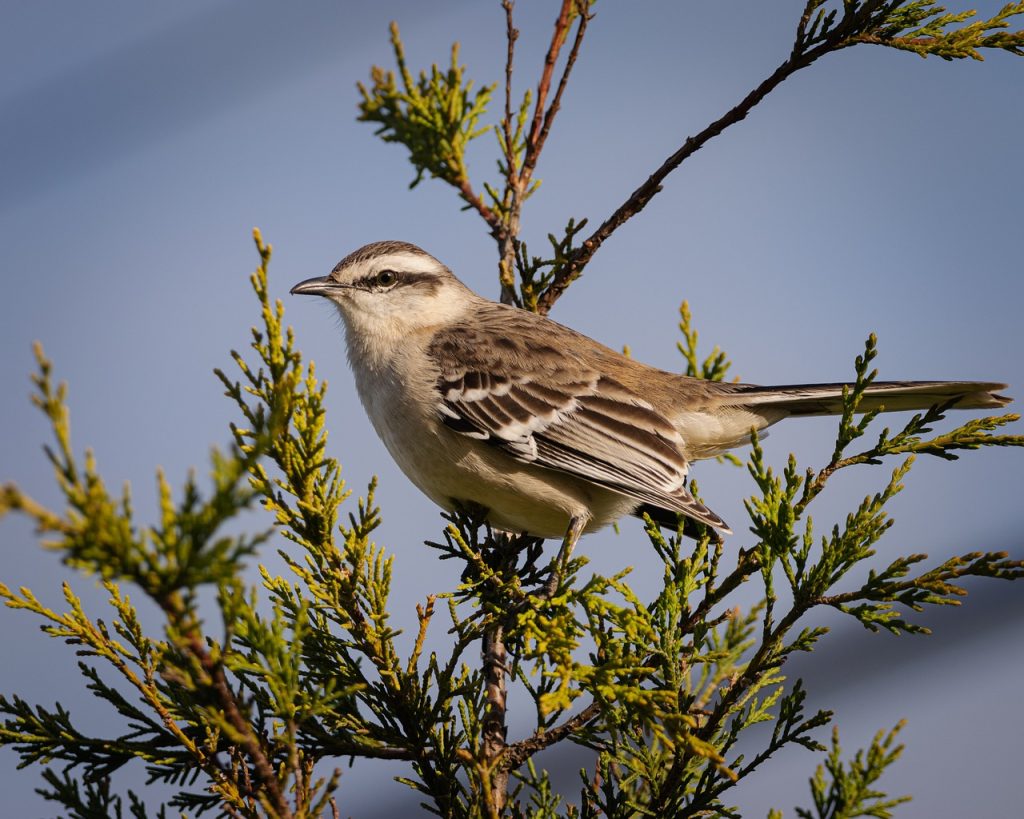
Where to Find Mockingbirds
Mockingbirds, belonging to the Mimus genus, are prevalent songbirds in the Western Hemisphere, with a wide distribution ranging from Mexico through Central and South America, including the Caribbean. They are often named based on their geographic location or physical characteristics, reflecting the diversity of their habitats and appearances.
The Northern Mockingbird, renowned for its melodious songs, boasts the northernmost range among all Mimidae species, spanning from southern Canada through the United States and into Mexico and the Caribbean.
Other notable mockingbird species include the Bahama Mockingbird, primarily found in the Bahamas; the Patagonian Mockingbird, inhabiting the Patagonian region of Argentina and Chile; the Chilean Mockingbird, exclusive to Chile west of the Andes; and the Tropical Mockingbird, residing in tropical regions of Central and South America and along the coast of Brazil. Additionally, the critically endangered Socorro Mockingbird is found on the small Mexican island of Socorro.
In the Galápagos Islands, several unique mockingbird species thrive, including the Galápagos Mockingbird, the endangered Floreana Mockingbird, the vulnerable Española Mockingbird, and the near-threatened San Cristobal Mockingbird, each adapted to the distinct environments of the archipelago.
Further south in South America, species such as the Chalk-browed Mockingbird, the Brown-backed Mockingbird, the White-banded Mockingbird, and the Long-tailed Mockingbird are native to various regions and habitats, contributing to the rich diversity of mockingbird species across the continent.
Mockingbirds, belonging to the Melanotis genus, include species such as the Blue Mockingbird and the Blue-and-white Mockingbird, primarily found in Mexico and Central America.
Habitat: Mockingbirds are versatile in their habitat preferences, occupying a range of environments. While they often inhabit forest edges, they tend to avoid dense forests. They are commonly found in desert scrublands, savannas, grasslands, shrubs, thickets, farms, open pastures, and parks. Mockingbirds thrive in areas with sparse trees and open spaces, often seeking cover provided by shrubs, hedges, or other vegetation. Remarkably adaptable, they are equally at home in rural, remote, suburban, and urban settings.
Nesting: Mockingbirds construct their nests using materials readily available in their surroundings. Typically cup-shaped with a loose base made of twigs, the nests are lined with softer materials such as grasses, rootlets, cotton, soft fibers, and even bits of paper. Their nesting behavior showcases their resourcefulness and ability to adapt to diverse environments.
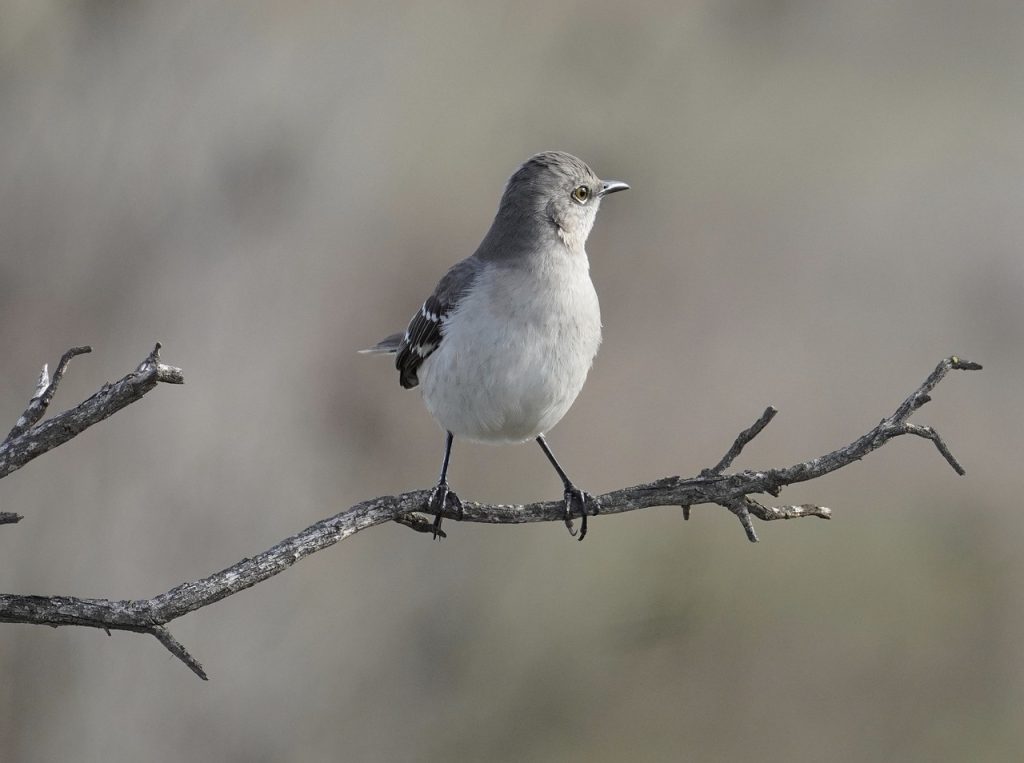
Scientific Name
Mockingbirds, members of the Mimidae family, share this classification with other avian species such as catbirds, thrashers, and tremblers, all of which bear some resemblance to each other. Initially described by Swainson in 1828, mockingbirds were grouped under the genus Orpheus. However, they are now classified into either the genus Mimus, meaning mimic, or the genus Melanotis, meaning black-eared. Notably, four species from the Galápagos Islands were formerly classified under the separate genus Nesomimus but were merged into the Mimus genus in 2007.
The genus Mimus encompasses 14 different species, with the Northern Mockingbird, scientifically known as Mimus polyglottos, being the most commonly encountered species in the United States. Its scientific name, derived from Latin, translates to “many-tongued mimic,” reflecting its exceptional vocal abilities and mimicry skills.
Appearance
Mockingbirds share a distinctive shape characterized by their slightly larger size compared to the average passerine, measuring between 8 to 11 inches in length. They exhibit a sleek appearance, attributed to their long, pointed bills and tails, which can be as long as their body. Additionally, mockingbirds have elongated legs, contributing to their overall slender profile.
Most species within the Mimus genus display shades of gray with various markings, including white stripes and bands. The Brown-backed Mockingbird resembles its Mimus counterparts but features a brown back instead.
In contrast, the Melanotis species maintain a similar shape but differ in coloration. The Blue Mockingbird showcases blue plumage, while the Blue-and-white Mockingbird exhibits blue feathers on its upper parts and white plumage below. Both species sport distinctive black masks extending from their bills, covering their lores and extending past their eyes, adding to their striking appearance.
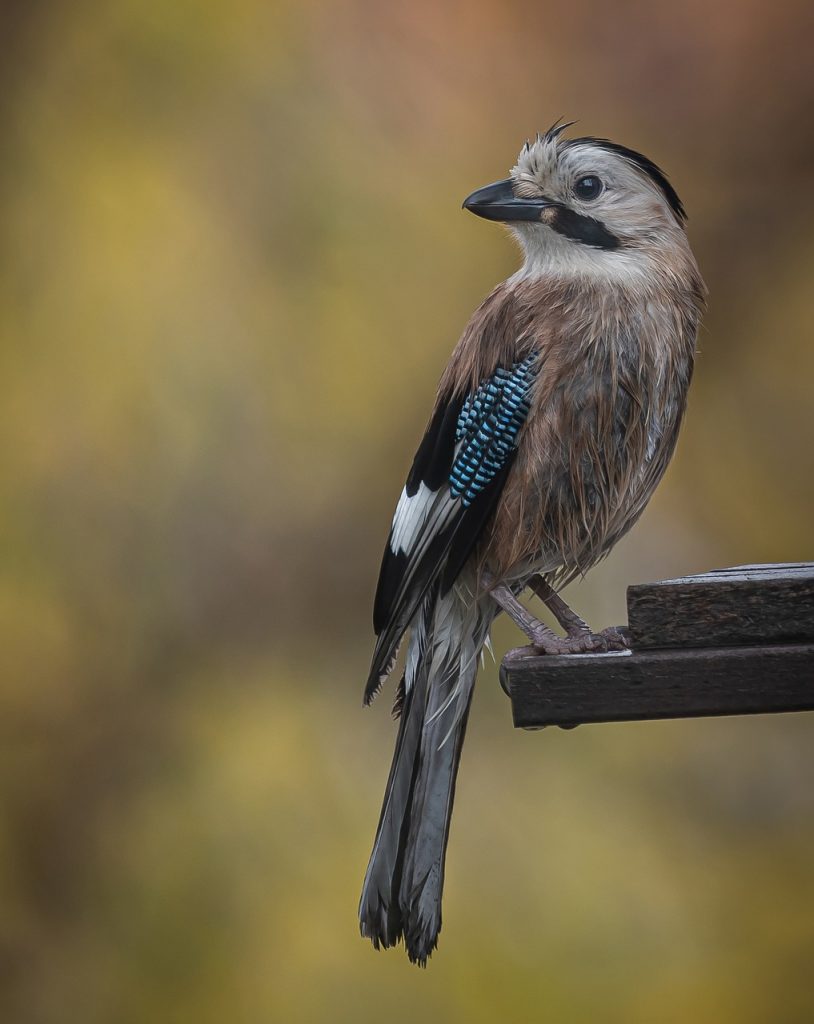
Behavior
Mockingbirds are renowned for their remarkable vocal abilities, capable of learning and mimicking up to 200 songs, including those of other birds and even animals like cats, dogs, and frogs. Their melodious tunes can be heard throughout the day and sometimes into the night, showcasing their extensive vocal repertoire.
In addition to their singing prowess, mockingbirds exhibit defensive behaviors such as raised-wing posturing and alarm calls tailored to different predators, as observed by experts like Dave Gammon. They are aggressive defenders of their nests, often chasing away intruders and even dive-bombing them to protect their territory. Mockingbirds demonstrate intelligence by recognizing human faces and reacting more aggressively to familiar intruders.
Despite their solitary nature, mockingbirds form breeding pairs during the mating season. While some species migrate, others remain in the same area year-round, with some endemic to specific regions and exhibiting limited or no migratory behavior. This diversity in migratory patterns adds to the complexity of their behavior and ecology.
Diet
Mockingbirds exhibit omnivorous feeding habits, consuming a diverse array of foods depending on their location and species. Northern Mockingbirds, for example, primarily feed on various invertebrates such as insects, spiders, earthworms, crustaceans, and snails, along with small lizards. During the fall and winter months, they also incorporate seeds, berries, and fruits into their diet, both from wild sources and cultivated plants.
The dietary preferences of mockingbird species can vary considerably. Some species have a broader diet, including the consumption of bird and lizard eggs, while others, like the Bahama Mockingbird, may supplement their diet with nectar. The Socorro Mockingbird is known to prey on terrestrial crabs, in addition to typical invertebrate prey. Mockingbirds native to the Galápagos Islands display particularly unique feeding behaviors, consuming baby turtles, feeding on the blood of injured birds, and scavenging on various types of carrion. This adaptability in diet reflects the diverse ecological niches occupied by different mockingbird species across their range.
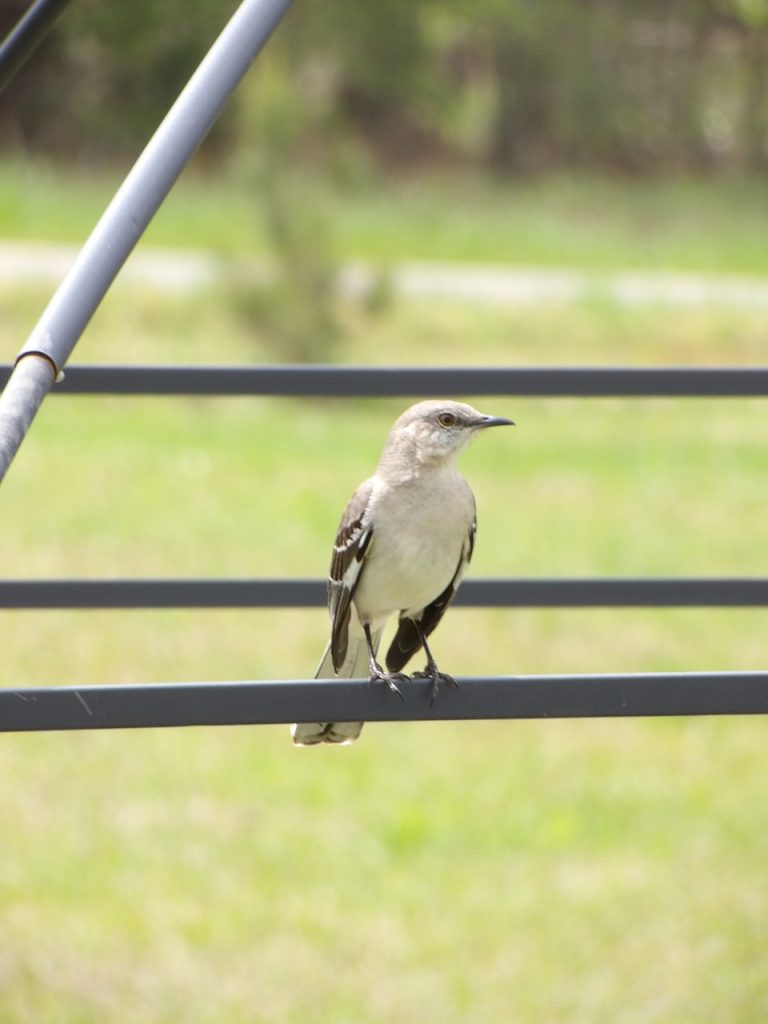
Reproduction
Mockingbirds typically form monogamous pairs based on mutual selection, although some may exhibit polygynous behavior, and individuals may switch mates between clutches within a breeding season. Nests are constructed low in trees, typically no higher than 10 feet, occasionally in cacti or shrubs. Nest-building responsibilities may vary between species, with some exhibiting cooperative efforts between males and females, while others see females undertaking the task alone.
Females lay their eggs in the cup-shaped nest, which features a base of twigs and is lined with softer materials. The number of eggs laid varies among different mockingbird species, with an average of 3 to 4 eggs per clutch. Females are primarily responsible for incubating the eggs, with males often assisting in feeding the nestlings. Incubation periods typically last 12 to 13 days in Northern Mockingbirds, and the chicks fledge approximately 12 days later. After fledging, males may continue to care for the young while females begin building a new nest. Mockingbirds typically reach sexual maturity within one year and may produce 2 to 4 broods each year. However, there is limited information available regarding the reproductive behavior of other mockingbird species.
Predators & Threats
A 2011 study highlighted that domestic cats pose the greatest threat to Northern Mockingbirds in urban environments, accounting for 70 percent of attacks in areas with high human populations. While cats are the primary concern, other predators such as hawks, owls, snakes, and crows also pose significant threats to mockingbirds. Additionally, eggs and chicks are vulnerable to predation by various nest predators including snakes, jays, raccoons, and squirrels.
Apart from predation, mockingbirds face additional threats such as habitat degradation and fragmentation, particularly affecting species with smaller ranges. Natural events like storms, fires, and other disturbances can exacerbate threats, especially for species dwelling in already vulnerable ecosystems. Accidental fatalities, such as window strikes, also contribute to mortality rates, particularly in urban areas where human infrastructure intersects with bird habitats. Moreover, human persecution may occur due to the territorial behavior and attraction to fruits displayed by mockingbirds, further impacting their populations.
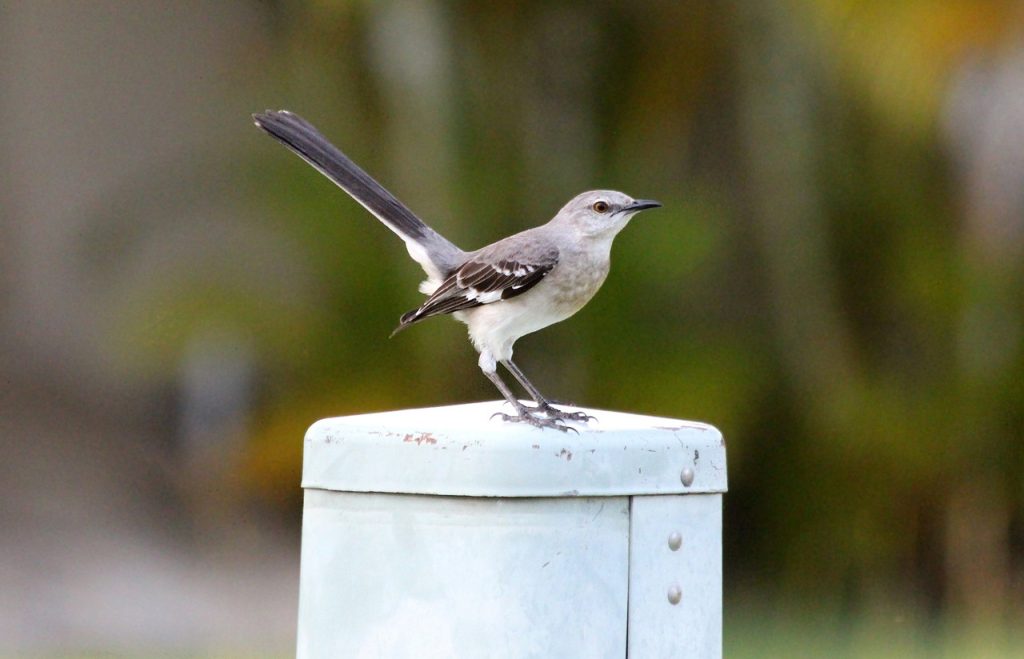
Lifespan & Conservation
The lifespan of most mockingbird species remains relatively unknown, but for the Northern Mockingbird, it’s approximately 8 years in the wild and up to 20 years in captivity. While the majority of mockingbird species are listed as species of least concern on the IUCN Red List, indicating robust population numbers and sufficient range to withstand habitat pressures, some species face significant challenges.
The San Cristóbal Mockingbird is categorized as near threatened due to its stable population but restricted range limited to a single island. Similarly, the Española Mockingbird is vulnerable, with a population ranging from 600 to 1,700 individuals, endemic to just two small islands. The Floreana Mockingbird, once critically endangered, remains endangered with a population that has experienced precarious lows over the past two decades. Lastly, the Socorro Mockingbird is critically endangered, facing threats from its tiny range and potentially fewer than 200 mature individuals remaining. These species highlight the importance of conservation efforts to protect and preserve vulnerable mockingbird populations.
Before You Go….
Mockingbirds are remarkable birds known for their impressive vocal abilities, omnivorous diets, and diverse distribution across the Americas. While many species thrive and are listed as species of least concern, some face significant threats, including habitat loss, predation, and limited range, leading to conservation concerns. Efforts to protect vulnerable species, such as the San Cristóbal, Española, Floreana, and Socorro Mockingbirds, are essential to ensure the survival of these iconic birds and maintain the biodiversity of their ecosystems.

